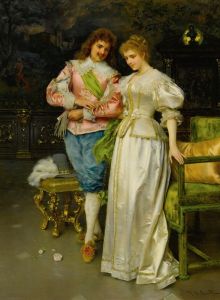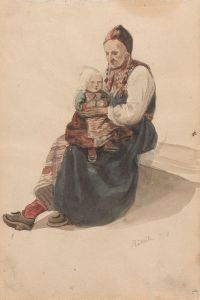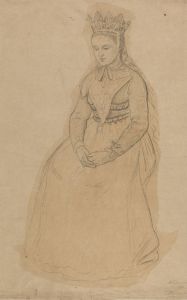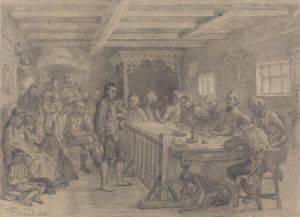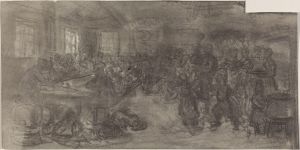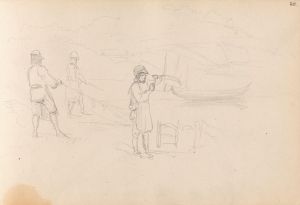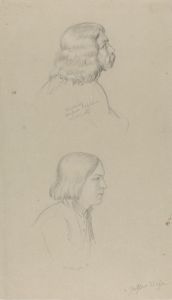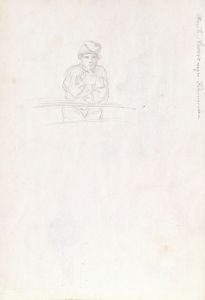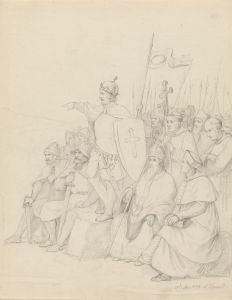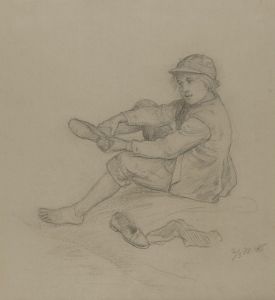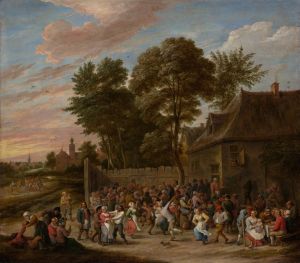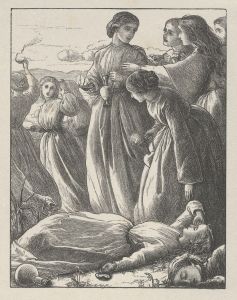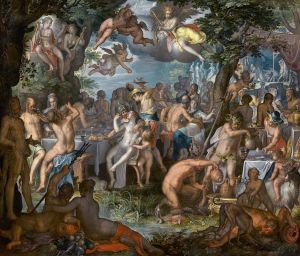
Bondebryllup i et interiør
A hand-painted replica of Adolph Tidemand’s masterpiece Bondebryllup i et interiør, meticulously crafted by professional artists to capture the true essence of the original. Each piece is created with museum-quality canvas and rare mineral pigments, carefully painted by experienced artists with delicate brushstrokes and rich, layered colors to perfectly recreate the texture of the original artwork. Unlike machine-printed reproductions, this hand-painted version brings the painting to life, infused with the artist’s emotions and skill in every stroke. Whether for personal collection or home decoration, it instantly elevates the artistic atmosphere of any space.
Adolph Tidemand's painting "Bondebryllup i et interiør" (translated as "Peasant Wedding in an Interior") is a significant work in the context of 19th-century Norwegian art. Adolph Tidemand (1814-1876) was a prominent Norwegian painter known for his detailed and realistic depictions of Norwegian folk life and traditions. His works often focused on the everyday lives of rural people, capturing their customs, costumes, and interiors with great accuracy and empathy.
"Bondebryllup i et interiør" is one of Tidemand's notable paintings, created in 1861. The painting portrays a traditional Norwegian peasant wedding, set within the interior of a rustic home. This work is celebrated for its meticulous attention to detail and its ability to convey the cultural and social atmosphere of the time.
The scene is lively and filled with various figures, each engaged in different activities that contribute to the festive mood of the wedding celebration. The bride and groom are central to the composition, surrounded by family and friends who are participating in the joyous occasion. The interior setting is richly decorated, showcasing traditional Norwegian furnishings and decorations that provide a glimpse into the domestic environment of the period.
Tidemand's use of color and light in "Bondebryllup i et interiør" enhances the warmth and vibrancy of the scene. The artist's skillful rendering of textures, from the wooden surfaces of the furniture to the fabrics of the clothing, adds to the realism and authenticity of the painting. The expressions and postures of the figures are carefully observed, reflecting the emotions and interactions typical of such a communal event.
This painting is not only an artistic achievement but also an important cultural document. It offers insights into the customs and social practices of 19th-century rural Norway, preserving a way of life that was rapidly changing due to industrialization and modernization. Tidemand's work, including "Bondebryllup i et interiør," played a crucial role in the national romantic movement in Norway, which sought to celebrate and preserve the nation's cultural heritage.
Adolph Tidemand's dedication to depicting Norwegian folk life earned him widespread recognition and acclaim during his lifetime. His paintings were exhibited in major European cities, and he received numerous commissions from both private patrons and public institutions. Today, "Bondebryllup i et interiør" is held in high regard and is part of the collection at the National Gallery in Oslo, Norway.
In summary, "Bondebryllup i et interiør" by Adolph Tidemand is a masterful representation of a traditional Norwegian peasant wedding, capturing the essence of rural life in the 19th century. Through his detailed and empathetic portrayal, Tidemand provides a valuable window into the cultural history of Norway, making this painting an enduring piece of the nation's artistic heritage.






